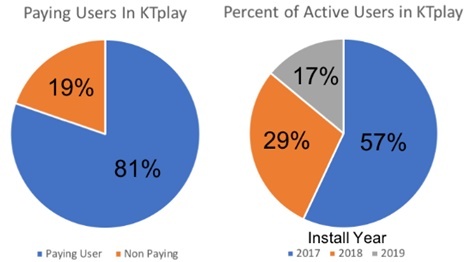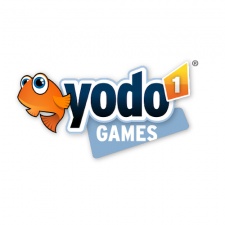Has anyone on your team ever asked: “Why do we use analytics?”
The reasons you’d give them wouldn’t differ much from why community management is important.
With this article, we’d like to highlight the benefits of coupling community insights with your analytics data. We’ll also provide tips and examples on how to effectively run events and operate your game based on community feedback.
Why is game community management important?
Everyone in the mobile games industry is using analytics to understand who their players are and what they like.
With information about their behaviour and traits, we segment players into groups to more effectively target and influence them. This is how we increase game retention, engagement and monetisation.
But what are the causal factors behind the trends and changes we see in our data?
Synthesising quantitative and qualitative data
Communities consist of real people - not just numerical data. Their behaviour and feedback change in unique ways as new content is introduced to the game. Studying these changes will teach you what you’re doing right and where you’ve gone wrong.
Analytics can show you the trends but without an understanding of the causal relationship between what you do and how it affects your players, you’ll be driving in the dark without your headlights on.
It’s easy to go wrong with purely analytical data because it can often be interpreted in more than one way. Community feedback can go a long way toward solving the problem of data misinterpretation.
Where analytics provide quantitative insight into your players’ behaviour, community feedback gives you the qualitative angle to add context and help you understand your data that much better.
The problem most game publishers face is an inability to couple in-game analytics with qualitative community data, because community management has mostly been happening outside of the game.
Why is it important to invest in community management inside your game? Because it lets you capitalise on the synthesis of both kinds of data.
Dealing with increased user acquisition costs
Beyond data synthesis, community management is important because it can help you hold onto your users.
Let’s face it: user acquisition is expensive.
While there have never been more tools for advertisers, the mobile games market is also flooded with competition from various publishers. Many top grossing games around the world pay upwards of $20 to $30 per user and most of China’s highest-ranking hardcore games consistently spend the equivalent of $40 to $50 on attracting one player.
When you’re shelling out that kind of money on a single user, you need to keep the ones you’ve already acquired engaged. What better way to do than through your community?

How to operate a game based on community feedback
Community management provides a direct connection between games developers and players. It gives you a pulse of what’s going on at ground level. Investing in that connection is what will enable your team to operate a game that catches - and keeps - the interest of the gaming community.
The first steps of effective community management:
- Understand who your community members are. Observe your community. What are you seeing in terms of player behaviour?
- Understand what they like. What is the data telling you about your players?
- Understand how they behave when faced with different challenges and content. Experiment with running different kinds of content and events.
Examples from Transformers Earth Wars
With that in mind, we can look at how we ran successful events for Transformers Earth Wars.
In partnership with Hasbro and Space Ape, Yodo1 launched TEW in China about two years ago. For the first six months, we purposely kept the content and live-ops of the Chinese version in sync with the global version in order to establish a baseline for analytics.
Instead of creating new content right off the bat, we simply kept a pulse of the community to see how they responded to the game and the events we were running.
Understand who your community members are. Observe your community. What are you seeing in terms of player behaviour?
Essentially, we followed the first steps of effective community management: understand who our community members are, learn what they like, and find out how they behave when faced with different challenges and content.
Using KTplay - our in-game community platform - we tracked player behaviour every time we pushed new content or ran an event. This gave us an advantage over games that didn’t have this source of deep analytics and therefore couldn’t understand players at such a level.
We didn’t have to rely on outside platforms such as Facebook, Reddit, or YouTube - which don’t allow you to connect players to their user accounts, much less track their behaviour.
To the contrary, instead of trying to understand our game community through such external platforms that only attract a scattering of players, we use KTplay right inside the game, and engage many more users.
Community management across cultures
Mobile gaming is a very international space. Naturally, you’ll question how community management differs from region to region - and what effect this will have on your investment.
While community management methodology is applicable globally, players in different demographics will act and behave differently.
Using a single strategy to influence a global audience is not going to be the most effective approach. Sure, you’ll get results - better in some places than others - but they won’t be optimal.
Take China, for example. Players in this market consume content at a remarkable rate - twice as fast as US players. Therefore, it takes a lot more content to keep Chinese players engaged.
4 tips on running community events
1. Run tests and collect information
The game space is constantly changing: an event that’s a hit today might be a dud three months from now. In order to run successful community events, it’s critical to know who is participating in them.
Are participating players:
- Free or paying?
- New or old?
- Minnows, dolphins, or whales?
At Yodo1, we had to set up a lot of experiments to uncover essential information about our participants. With KTplay’s community analytics to tell us what kind of players were participating in our events, we were able to determine whether - and why - or not they were successful. Some of the results took us by surprise.
For example, when running weekly events with small prizes, we’d always assumed that participants were free players or minnows. Data proved us very wrong. We found that 80 per cent of the players participating in these events were paying and half of them were high-quality users - a high percentage of whom had been in the game for more than a year.
We also found that our most active in-game community members were also our most loyal and valuable players. Of our active community members, 86 per cent had been playing the game for a year or more. During this time, 81 per cent spent money.

Among active community members, 63 per cent have spent over $150 each and 32 per cent have surpassed a total expenditure of $1,500 per player.

2. Target events at different segments
We’ve now run so many experiments that we have templates for various segments, and having them has been extremely useful in targeting specific player groups with each event we run.
You can target user segments by setting corresponding completion requirements. For example, create action based events for low tiers and spending-based event for high tiers.
Thus, for a low-tier segment, the primary aim of an event might be to drive players engagement and content creation. With a high-tier event, on the other hand, you might drive your whales to spend as much as $2,000 to get prized loot or unlock a special ability.
3. Use the right tools for the right job
With a clear target and correlating completion requirements set, we use the tools built into KTplay to make sure the whole community knows when an event goes live. Then we sit back and let the analytics reveal which segments are participating and completing the requirements.
Among active community members, 63 per cent have spent over $150 each and 32 per cent have surpassed a total expenditure of $1,500 per player.
Beyond that, we still use outside platforms for specific purposes. For examples, TEW had special WeChat groups for VIPs and SVIPs. We define a VIP as someone who has spent more than $1,500 in the game, and SVIPs are players who have passed the $8,000 mark.
At the end of the day, it’s about using the right tool for the right job. The challenge is tying them all together to cover your blind spots.
4. Engage Your VIPs
In the first six-to-nine months of running TEW in China, we found that a lot of whales and super whales were tapping out after spending between $5k and $8k. At this point, they would either become idle or leave for other games. Naturally, our revenue dropped.
We addressed this by introducing special VIP programs, focused on encouraging whales and super whales to become active again.
We observed that super whales who saw their alliance members buying the latest transformer bot bundle would want to do the same, even when they didn’t actually need the bot that was on sale. Moving forward with this insight, we were able to give them more ways to feel good about spending.
That being said, it’s not only about interacting with whales and super whales, though it might seem the most appealing from a revenue perspective.
In fact, we were able to significantly increase our revenue from low-tier players by targeting them with community announcements about low-priced, high-value offerings that were only available in limited quantities and for a certain period of time.
The takeaway is that you need to influence each of your player groups in the right way.
Closing advice for community managers
Here are a few final pointers for teams who want to understand and effectively target the players in their community:
- Set up your community management methodology and platform before creating events. We’ve learned from experience that shooting from the hip doesn’t work. Without the right infrastructure, you won’t be able to understand what’s going right or wrong, much less why.
- Using different social platforms is not enough. Though external platforms are useful for some things, they won’t provide the deep analytics you need to understand your community. You need an in-game community that connects members to their user account, so you can look at someone’s post and see what kind of user they are, how long they’ve been playing the game, how much time do they spend in-game each day and, most importantly, how much money they have spent in the game.
- Monitor community activity on a daily basis. This will tell you if your community has fallen quiet and needs a fresh-content burst, or if you need to do something about the flood of feedback that’s come in since your latest game update. Monitoring your community in real-time allows your live-ops team to readily interpret the context of changes in user behaviour and analytics data.
With a tool like KTplay, your team will be able to run targeted events that drive the desired behaviour in each user segment. Set it up and watch how your players - and your bottom line - respond.
Reach out to our industry experts at Yodo1 to get KTplay for your game.

















